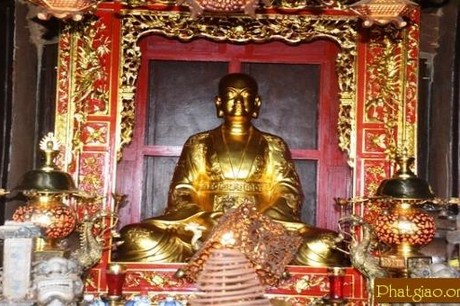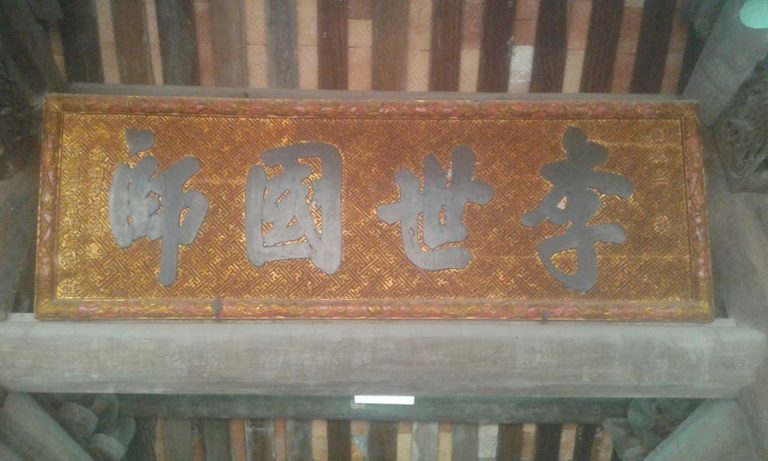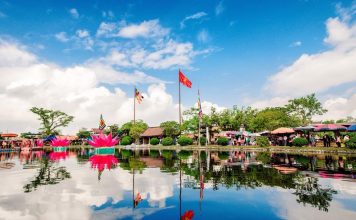 1. Brief Biography of Zen Master Duong Khong Lo
1. Brief Biography of Zen Master Duong Khong Lo
Zen Master Duong Khong Lo, whose birth name was Duong Minh Nghiem and Dharma title was Thong Huyen, was born in 1016 in Giao Thuy village, Hai Thanh Prefecture (now part of Nam Dinh province). He was a renowned Zen master in the history of Vietnamese Buddhism, particularly within the Thien (Zen) sect.
Duong Khong Lo’s path to Buddhism was unique. In his youth, he worked as a fisherman but later abandoned the trade to pursue a monastic life. He studied under Noan Layman in Bao Tai village (exact location unknown) and eventually became the 10th Patriarch of the Vo Ngon Thong Zen lineage.
He was distinguished not only for his profound understanding of Zen teachings but also for his poetic talent. Duong Khong Lo was among the first figures in Vietnamese Buddhist history to significantly influence the development of both the Vo Ngon Thong and Thao Duong Zen schools.
2. Contributions and Legacy
Duong Khong Lo was a highly influential Zen master who left a lasting impact on Vietnamese Zen Buddhism and literature. His greatest contribution was the expansion of the Vo Ngon Thong lineage in Vietnam. His poetry not only conveyed deep Zen philosophy but also reflected contemplations on nature, life, and the human condition.
Beyond his role in Buddhism, he was also known for his poetic works, including famous compositions such as Ngon Hoai and Ngu Nhan. These poems exemplified Zen philosophy and the harmony between humans and nature.
3. Connection to Keo Pagoda
Keo Pagoda is one of the most significant Buddhist sites associated with Zen Master Duong Khong Lo. His connection to Keo Pagoda can be summarized through the following key events:
• Establishment of Nghiem Quang Pagoda: In 1061, Duong Khong Lo built Nghiem Quang Pagoda in Giao Thuy village (later known as Keo village). This pagoda became a renowned monastic center where he practiced and taught, playing a crucial role in the spread of Vo Ngon Thong Zen Buddhism in Vietnam.
• Renaming to Than Quang Tu: After Zen Master Duong Khong Lo passed away in 1094, Nghiem Quang Pagoda was renamed Than Quang Tu in honor of his contributions.
• The Great Flood and the Migration of Keo Villagers: In 1611, a massive flood eroded the foundation of Nghiem Quang Pagoda, sweeping away both the temple and Giao Thuy village. Following this disaster, the villagers of Keo split into two groups: one moved southeast to the right bank of the Red River and established Keo Pagoda – Hanh Thien (now in Nam Dinh province), while the other relocated northeast to the left bank of the Red River and built Keo Pagoda – Thai Binh.
• Keo Pagoda Today: Both Keo Pagoda – Hanh Thien and Keo Pagoda – Thai Binh remain historically and culturally significant, preserving the legacy of Zen Master Duong Khong Lo. Keo Pagoda – Hanh Thien, reconstructed after the flood, continues to be an important pilgrimage site, attracting many Buddhist devotees and visitors.
4. Conclusion
Zen Master Duong Khong Lo was a pivotal figure not only in Vietnamese Buddhism but also in its literary tradition. His association with Keo Pagoda, particularly through the establishment of Nghiem Quang Pagoda and the subsequent migration of villagers after the flood, contributed to a rich cultural and religious heritage. Today, the Keo Pagodas remain significant pilgrimage and research sites, preserving historical values and honoring the master’s contributions to Buddhism and Vietnamese literature.
!["[KTMH] Trailer | WHAT TO DO TO MAKE SUMMER HOLIDAYS MORE MEANINGFUL?"](https://i3.ytimg.com/vi/s0VUGa1v6uw/maxresdefault.jpg)

.jpg)

.jpg)